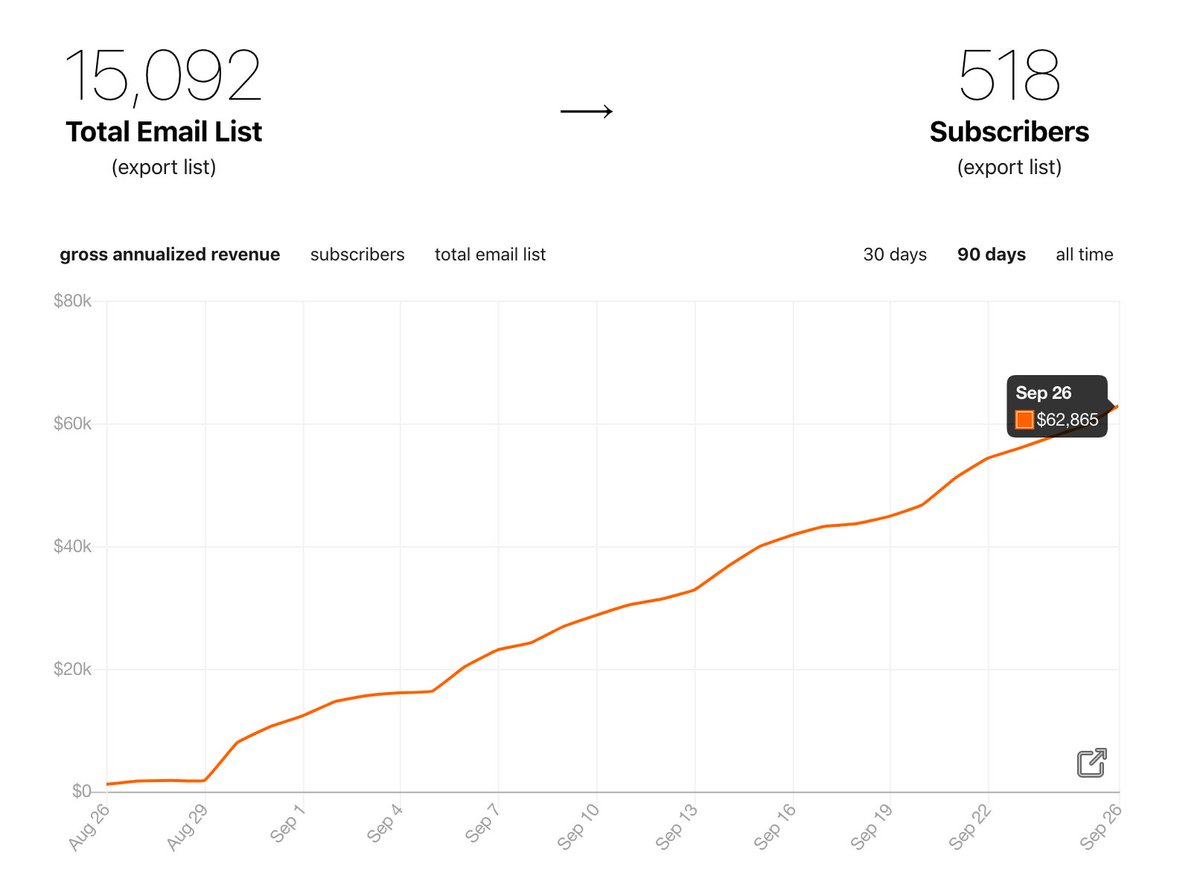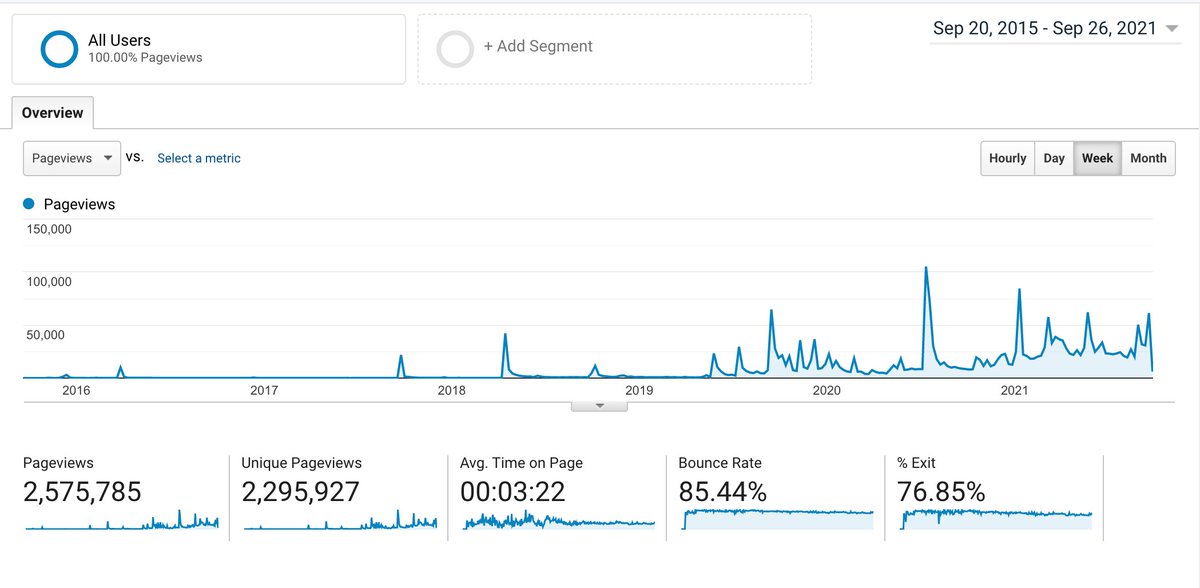
When you ask "Why did Company build 7 of the same products that all failed?", it always starts with the current solution struggling. This is an opportunity. Not to fix - which doesn't get you promoted - but to start anew.
An all too real story about Promotion Driven Development:
An all too real story about Promotion Driven Development:
1. Opportunity.
The PM identifies the opportunity as Company's current product(s) are struggling. The root cause? Incorrect positioning/not understanding new market dynamics.
Opportunity: build a new product that addresses all these issues (and can get the PM promoted)
The PM identifies the opportunity as Company's current product(s) are struggling. The root cause? Incorrect positioning/not understanding new market dynamics.
Opportunity: build a new product that addresses all these issues (and can get the PM promoted)
2. Proposal.
The PM makes a business case and an investment ask. "If we fund a team of 10 engineers, 2 data scientists, 1 designer, and 1 PM, we can ship a new product in 12 months, and an MVP in 6. This will result in this many users/revenue/market share: 📈"
The PM makes a business case and an investment ask. "If we fund a team of 10 engineers, 2 data scientists, 1 designer, and 1 PM, we can ship a new product in 12 months, and an MVP in 6. This will result in this many users/revenue/market share: 📈"
3. Funding.
At the bi-annual planning and headcount allocation, the GPM and Sr Product Director all support the proposal well ahead of the meeting. It's a good move for the organization, and a strategic bet. The PM is still nervous, but the ask is approved.
The project is live!
At the bi-annual planning and headcount allocation, the GPM and Sr Product Director all support the proposal well ahead of the meeting. It's a good move for the organization, and a strategic bet. The PM is still nervous, but the ask is approved.
The project is live!
4. Hiring.
The project is seeded with a few internal transfers the PM convinces to join. Many of these are senior engineers who are looking for that Staff-level project to be promoted. They start work. Another 7 engineers and a manager are hired throughout the next 6 months.
The project is seeded with a few internal transfers the PM convinces to join. Many of these are senior engineers who are looking for that Staff-level project to be promoted. They start work. Another 7 engineers and a manager are hired throughout the next 6 months.
5. Building.
The next 6 months, the engineers plan the key features, build them over weeks, and ship them to internal dogfooders, and beta users. The project progresses very nicely. External beta users are recruited and use the product.
The next 6 months, the engineers plan the key features, build them over weeks, and ship them to internal dogfooders, and beta users. The project progresses very nicely. External beta users are recruited and use the product.
6. Launch.
With a v1 version ready, 6 months after the kickoff, the product launches. At a company this size, the launch happens in a small market: New Zealand. It's not yet promoted widely, but the product is now, indeed live, and getting ready for further rollout.
With a v1 version ready, 6 months after the kickoff, the product launches. At a company this size, the launch happens in a small market: New Zealand. It's not yet promoted widely, but the product is now, indeed live, and getting ready for further rollout.
7. Promotion season.
It's been 8 months since the kickoff and promotions are happening. The PM is promoted to Sr PM, and one of the engineers to Staff for having identified and executed on a strategic business opportunity, and shipping it to production in such a short time.
It's been 8 months since the kickoff and promotions are happening. The PM is promoted to Sr PM, and one of the engineers to Staff for having identified and executed on a strategic business opportunity, and shipping it to production in such a short time.
8. Iterating.
The product rolls out in other countries, and initial growth looks good. The next 6 months the team keeps adding more features, and shipping these to smaller cohorts. There seems to be lots of churn after 2 months. But it's a bit too early to tell, to be fair.
The product rolls out in other countries, and initial growth looks good. The next 6 months the team keeps adding more features, and shipping these to smaller cohorts. There seems to be lots of churn after 2 months. But it's a bit too early to tell, to be fair.
9. More funding.
The PM strikes a deal with Popular Company Product to integrate their chat to their the main screen. User signups surge and the growth graph is a hockeystick.
The (Sr) PM asks for more funding: another 20 engineers. Approved for 15. The team grows. More hiring!
The PM strikes a deal with Popular Company Product to integrate their chat to their the main screen. User signups surge and the growth graph is a hockeystick.
The (Sr) PM asks for more funding: another 20 engineers. Approved for 15. The team grows. More hiring!
10. More promotions.
The other founding senior engineer is also promoted to Staff, as well as other engineers. The EM is promoted to Sr EM for growing a team from zero to 20 engineers, and two managers in such a short time.
The other founding senior engineer is also promoted to Staff, as well as other engineers. The EM is promoted to Sr EM for growing a team from zero to 20 engineers, and two managers in such a short time.
11. Growth slowing.
That two-month churn is surfacing, and it's bad. The hockestick is flattening.
It's unclear why users are churning. Well, that's not entirely true: there's dozens of reasons, and each one is a major project to fix. Confusion with other products is also one.
That two-month churn is surfacing, and it's bad. The hockestick is flattening.
It's unclear why users are churning. Well, that's not entirely true: there's dozens of reasons, and each one is a major project to fix. Confusion with other products is also one.
12. Founding team members leaving.
The founding PM realizes a project slowing down won't help them get to Director. Best to leave when things are still growing.
They internally transfer to head up three teams taking on a directly threatening competitor instead.
The founding PM realizes a project slowing down won't help them get to Director. Best to leave when things are still growing.
They internally transfer to head up three teams taking on a directly threatening competitor instead.
13. More team members leaving.
Growth is flat, and there is no clear fix for the problem.
Three of the engineers and a manager follows the PM to the new teams. A few other engineers transfer to other teams building interesting things.
Growth is flat, and there is no clear fix for the problem.
Three of the engineers and a manager follows the PM to the new teams. A few other engineers transfer to other teams building interesting things.
14. A struggling team.
Growth is turning negative. The team is not given additional headcount the next planning cycle. There are rumors of no backfills, unless the metrics improve. The EM and PM both transfer to another team as well. The new EM and PM are now both new hires.
Growth is turning negative. The team is not given additional headcount the next planning cycle. There are rumors of no backfills, unless the metrics improve. The EM and PM both transfer to another team as well. The new EM and PM are now both new hires.
15. The speculation.
The org all-hands no longer mentions the product. Internal transfers avoid the team. People are talking: why did the product fail?
The area is strategic to the company. The start was promising. What went wrong? Was it the people? Execution? The competition?
The org all-hands no longer mentions the product. Internal transfers avoid the team. People are talking: why did the product fail?
The area is strategic to the company. The start was promising. What went wrong? Was it the people? Execution? The competition?
16. The realization.
A PM thinks they understand the cause. The market shifted. Positioning was poor. The area is still strategic.
Could this be... the opportunity they've been looking for? They take a deep breath and decide it is. They know what to do:
A PM thinks they understand the cause. The market shifted. Positioning was poor. The area is still strategic.
Could this be... the opportunity they've been looking for? They take a deep breath and decide it is. They know what to do:
https://twitter.com/GergelyOrosz/status/1442215732545216518
• • •
Missing some Tweet in this thread? You can try to
force a refresh







